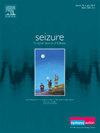一家公立和私立医院的功能性癫痫发作符号学和分类。
IF 2.7
3区 医学
Q2 CLINICAL NEUROLOGY
引用次数: 0
摘要
目的:目前,我们对不同社会经济背景下功能性癫痫发作(FS)(又称精神性非癫痫发作(PNES))患者癫痫发作半身像的潜在差异了解有限。通过研究不同社会经济群体间癫痫发作表现的差异,我们旨在加深对社会经济因素如何影响 FS 表现的理解。本研究旨在描述南非开普敦私立和公立癫痫监测机构(EMU)患者的FS半身像:研究对象包括通过视频脑电图(video-EEG)确诊的FS患者,且无合并癫痫。在这项回顾性病例对照研究中,有关癫痫发作半身像的数据来自数字化病历,从每家医院最早的病历开始收集:共有 305 名来自私立医院的患者和 67 名来自公立医院的患者符合研究条件(N = 372)。与公立医院相比,私立医院倾向于报告更多的运动性和主观性癫痫发作类型。此外,公立医院的患者报告情绪性发作诱因(aOR=2.57,95% CI [1.03,6.37])、意识或知觉丧失(aOR=2.58,95% CI [1.07,6.24])和事件后快速恢复(aOR=6.01,95% CI [2.52,14.34])的几率更高。与此同时,与私立医院患者相比,他们较少报告癫痫发作时间短(5 分钟)(aOR=0.73,95% CI [0.13,0.56])、对事件失忆(aOR=0.19,95% CI [0.09,0.43])、发作性失语(aOR=0.33,95% CI [0.14,0.76])或跌倒和跌伤(aOR=0.43,95% CI [0.18,0.996]):虽然两个社会经济组群的 FS 患者的癫痫发作表现基本一致,但也观察到一些微妙的差异,值得进一步研究。本文章由计算机程序翻译,如有差异,请以英文原文为准。
Functional seizure semiology and classification in a public and private hospital
Purpose
Our understanding of potential differences in seizure semiology among patients with functional seizures (FS), also known as psychogenic non-epileptic seizures (PNES), across socioeconomic contexts is currently limited. By examining the differences in seizure manifestations between different socioeconomic groups, we aim to enhance the understanding of how socioeconomic factors may influence FS presentation. This study aimed to describe FS semiology in patients from a private and public epilepsy monitoring units (EMUs) in Cape Town, South Africa.
Methods
The study included patients with FS confirmed through video-electroencephalography (video-EEG) and without comorbid epilepsy. For this retrospective case-control study, data on seizure semiology was gathered from digital patient records, beginning with the earliest available record for each hospital.
Results
A total of 305 patients from a private hospital and 67 patients from a public hospital were eligible for the study (N = 372). The private hospital tended to report more akinetic and subjective seizure types when compared to the public hospital. Additionally, patients at the public hospital had higher odds of reporting emotional seizure triggers (aOR=2.57, 95% CI [1.03, 6.37]), loss of consciousness or awareness (aOR=2.58, 95% CI [1.07, 6.24]), and rapid post-event recovery (aOR=6.01, 95% CI [2.52, 14.34]). At the same time, they were less likely to report both short (<30 s) (aOR=0.21, 95% CI [0.08, 0.55]) and long (>5 min) seizures (aOR=0.73, 95% CI [0.13, 0.56]), amnesia for the event (aOR=0.19, 95% CI [0.09, 0.43]), ictal aphasia (aOR=0.33, 95% CI [0.14, 0.76]) or falls and drop attacks (aOR=0.43, 95% CI [0.18, 0.996]), when compared to the private hospital patients.
Conclusion
While the seizure manifestations were largely consistent across the two socioeconomic cohorts of patients with FS, some subtle differences were observed and warrant further investigation.
求助全文
通过发布文献求助,成功后即可免费获取论文全文。
去求助
来源期刊

Seizure-European Journal of Epilepsy
医学-临床神经学
CiteScore
5.60
自引率
6.70%
发文量
231
审稿时长
34 days
期刊介绍:
Seizure - European Journal of Epilepsy is an international journal owned by Epilepsy Action (the largest member led epilepsy organisation in the UK). It provides a forum for papers on all topics related to epilepsy and seizure disorders.
 求助内容:
求助内容: 应助结果提醒方式:
应助结果提醒方式:


